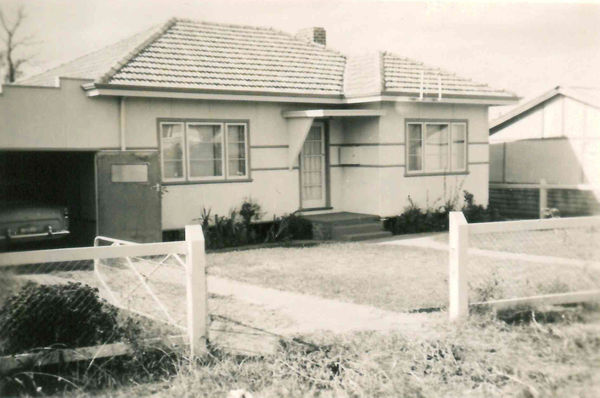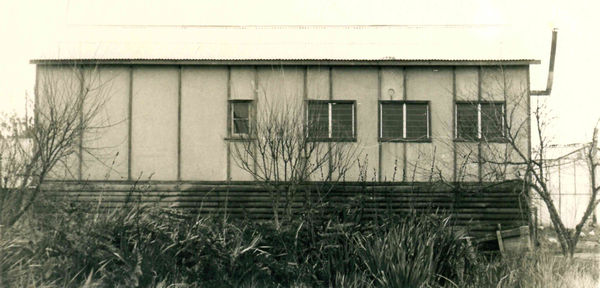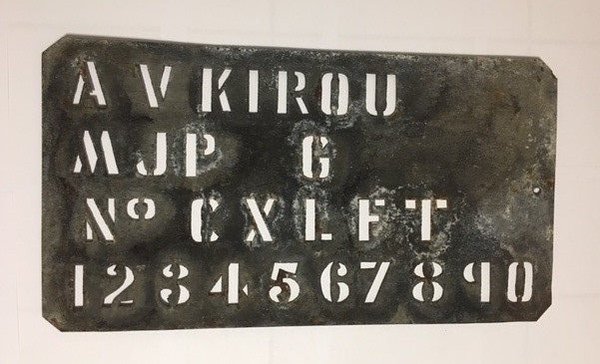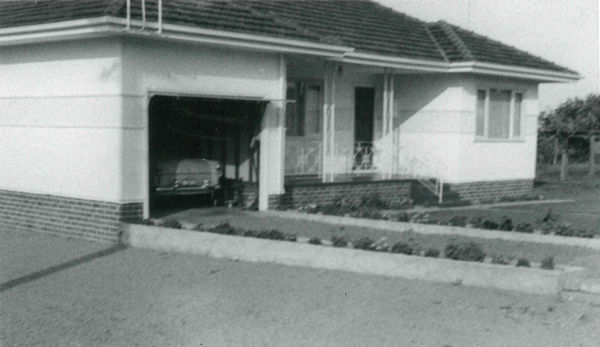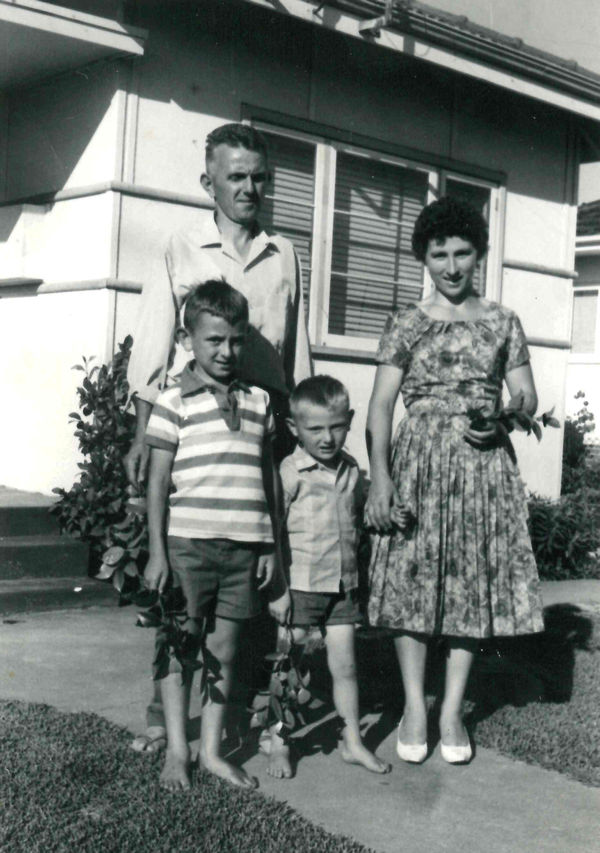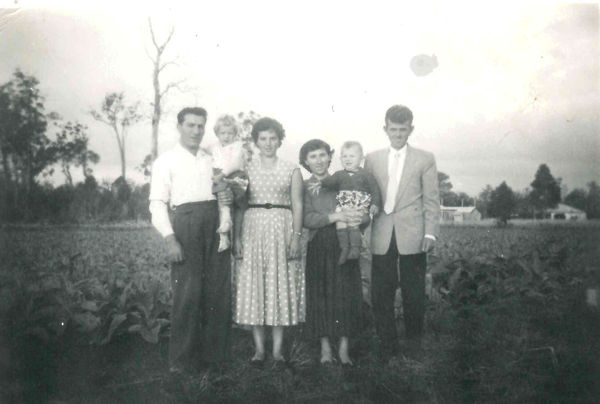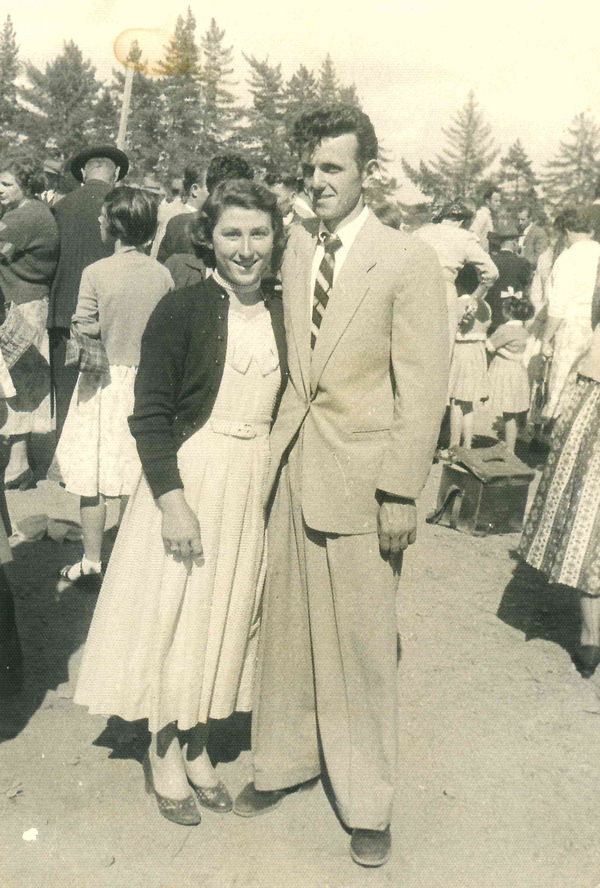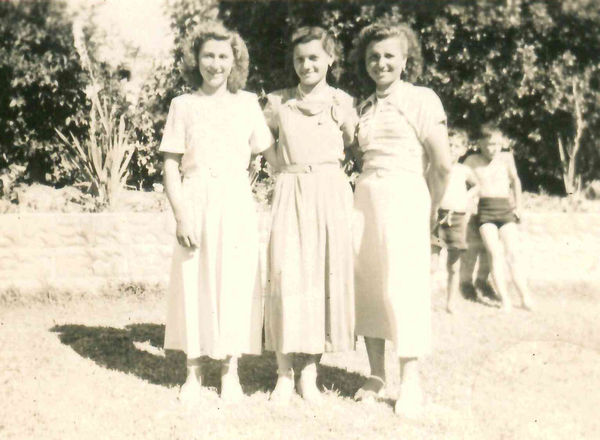
|
|
||||
|
|
||||
|
|
||||
|
|
MY TIME IN MANJIMUP Manjimup is a small timber and farming town 300 kilometres south
of Perth. My aunty, Teta Stoina, told me about a nice girl in town.
Her name was Ristana Popova /Dimova (or Dimou in Greek). Her family
was referred to as Popova because her grandfather Georgi was a priest.
Ristana's family are from Turie which is a neighbouring village to
Neret. A few weeks after meeting Ristana, I shifted to Manjimup and
then on the 15th of September 1957, we were married at St Martin's
Church of England. Prolonged engagements and courtships were non-existent
for our people at that time - you had to be pretty much married before
you could go out together. We were fortunate enough to have two boys,
George, born 30th October 1958 and John, born on 9th October 1961. We had many people attend our wedding. Well over 400 people crammed
into the Manjimup town hall, with many making the 300km trip from
Perth. Early the next morning straight after the wedding and only
having had a couple of hours sleep, there was a knock at the door
for my new bride and I to get up so we could work on my fathers-in-law's
tobacco crop. That is where we spent our honeymoon. You would think
we would be cut some slack for at least one day. During my first year in Manjimup, Ristana and I agreed to work for
my father-in-law. We were to be paid $1000 pounds for the year which
was pretty good money at the time. Unfortunately, it proved to be
extremely hard, relentless work, for more often than not seven days
a week. On the farm we used extremely toxic pesticides such as Dieldrin
and Metasystox to control insects and weeds, both of which have since
been banned. We would tend to the crops, weeding and watering during
the day and spraying in the evenings when it was cooler. We never
wore masks when using the insecticides and often walked through the
misty spray. God only knows how neither of us got sick later in life
as a result. My father-in-law would, at times, receive pleas for help
from other growers who needed assistance with their tobacco crops
and in doing so, would send Ristana and I to help out. I learned my lesson from that first year and in the following year,
1959, I leased out some of my father-in- law's farm and we worked
the land ourselves. We made very good money from that year's tobacco
crop as we did in the following year. We used much of these earnings
to build new kilns and 2-storeyed drying and bailing sheds. Unfortunately,
all of this money that Ristana and I sunk into infrastructure was
to prove a waste as the tobacco industry in Western Australia folded
in 1961. There were warnings that the industry was going to fold and
that no more tobacco was to be sourced from Western Australia and
shipped to the Eastern States for processing, but many growers dismissed
it as rumours, especially many growers of Macedonian background who
were not able to read and communicate efficiently. Financially I was back to square one again - penniless. I had to
start all over again and the first thing was to look for work. I firstly
went to seek work at a timber mill in Palgarup (which is a very small
town just outside of Manjimup) but was told that there was no work
available. I believe that they feared I would not commit for a long
enough period and instead would leave soon after if new work opened
on farms. I then went to the local shire council in Manjimup. They also said
that there was no work available at that moment, but I was asked what
sort of skills I possessed. I said that I could do construction work.
My father-in-law had constructed all his tobacco buildings and when
the time came to construct mine, we worked together, and I learned
a lot from him. By the time I had finished, I was able to construct
a timber roof and do bricklaying, a requirement for building kilns. Bill Crombie was the person who I spoke to and as I was leaving,
he called me back and asked me if I could bricklay walls. I said that
I was confident that I could do it and he said OK you can start tomorrow.
Initially I started doing paving and roadside curbs. Gradually I worked
my way up to the position of leading hand. I also learned how to use
a theodolite so I could do surveying tasks. I used these skills to
help with drainage and sewerage works. I grew in confidence to the
point where I was given the task of marking out and erecting the support
posts for the fence around the Manjimup Sanctuary (this is now the
Manjimup Timber Museum). I also coordinated the construction of a
new road through thick bush near Quinninup. I marked out everything
and everyone followed behind me - bulldozers, graders, trucks, rollers
etc. Whilst at the shire council, I also learned how to drive all
sorts of machinery - trucks, graders, rollers, bulldozers etc. In July of 1966 (as the decimal currency system was newly introduced)
I left my council job to open my delicatessen store called "Kirou's
Store" on Giblett Street which was next to Thompson's Shell Garage
and near the Manjimup Hotel. The business was very lucrative but once
again required working seven days a week with long hours. I would
leave Ristana to look after the store whilst I travelled at least
once and sometimes twice a week back and forth to Perth picking up
supplies from the Perth Metropolitan Markets which were in the heart
of the city at that time and other suppliers such as Kakulas Brothers.
I had numerous tyre blow outs because the van was always overloaded
and struggled with the excessive weight. The Toyota van started off
as an open, flat bed utility which was modified in Perth into a totally
waterproof enclosed van. It had a lockable back door but aerodynamically
it was terrible. The van was difficult to control, and it tended to
sway as it was constantly buffeted by wind. I also had numerous broken
front windscreens, and every time that would happen you could bet
it would rain. I can recall getting home late at night on several
occasions drenched and freezing because of a shattered front windscreen
that I had to remove in order to see where I was going. On another
occasion, which just so happened to be the last trip to Perth, on
the way home, I had a broken rear axle and the back wheel shot off
in front of me. The van's rear was now scraping along the bitumen,
and I had no rear brakes. I managed to somehow control the van enough
to avoid a log truck coming the other way, ending up in a ditch with
no major damage and lucky to be alive. Soon after that incident we
sold the store. I spent several weeks in hospital, and I knew things were serious
because I was in intensive care for some time. I can clearly recollect
the man in the bed next to me constantly asking the nurses and doctors
how I was fairing, and they signalled that it wasn't looking good.
I had a portion of my intestine removed and I was on soft mushed up
food for quite some time. I put the ulcer down to stress and worry.
I was always concerned about providing for my family and about my
parents' welfare back in the village. I would always work hard to
make enough money so I could regularly send funds to my parents and
siblings back home. Since then, I've changed my outlook to life and
decided worrying and stressing was not going to solve anything and
what good would I be to my family if I was sick. Unlike before, now,
when my head hits the pillow, I switch off and get quality sleep.
Whilst I was in hospital, my father-in-law was kind enough to cover
for me until I was well enough to resume. My 12 years in Manjimup were difficult as I was newly married with a young family, and I worked hard to make a better life than that which I had left in the village. However, there were also many good times living in Manjimup as there was a very large Macedonian population and there would be regular picnics held at Fonty's Pool and dances organised in the town hall with traditional live music being performed in Macedonian - something that was difficult to do back in the village. The boys had a great time growing up surrounded by relatives all around them. We lived on 50 Graphite Road and on number 48 lived my wife's sister, Petra with her two boys. On 52 Graphite Road lived my in-laws who proved invaluable as babysitters whilst we worked. On 54 Graphite Road lived my wife's other sister Lena with her husband Stase and their three boys. Three doors down on 60 Graphite Road lived my sister Kata and husband Giro with their young daughter and son. There were also relatives over the road and nearby in town as well as on farms out of town.
Photos from our wedding 15/09/1957.
The kilns were a short distance behind the building in the photo.
Unfortunately, nobody thought to take a photo of the kilns as at the
time they seemed insignificant. The partially dried leaves were then
transferred to the lower section of the main tobacco building where
they were placed out of the sun, and the cooler airflow could do its
work in continuing the drying process. Once sufficiently dry, the
leaves were taken to the upper level for grading and packing. The
tobacco leaves had to retain some degree of moisture and suppleness
- if they were too brittle and flaky then they were considered too
dry. In the top level of the building, each leaf was painstakingly assessed for quality and then, with the aid of a press, packed into large bales. These bales were then marked with our details and made ready for shipment to the eastern states. I have, to this day, kept the metal template that was used to mark the bales as a lasting souvenir.
However, with the boys, George and John, growing up and the thought about them requiring tertiary education, together with the lack of work opportunities and inadequate medical facilities in Manjimup, on the 9th of August 1969 we shifted to Perth. The Life Story of Tanas Kirev
|
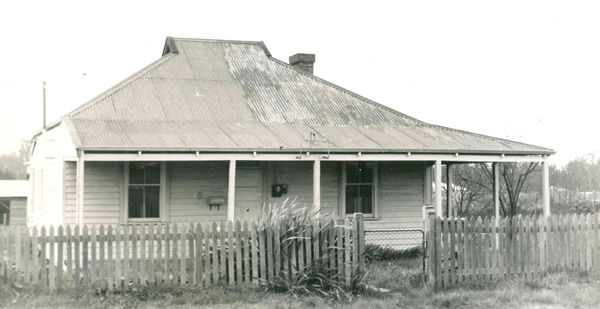
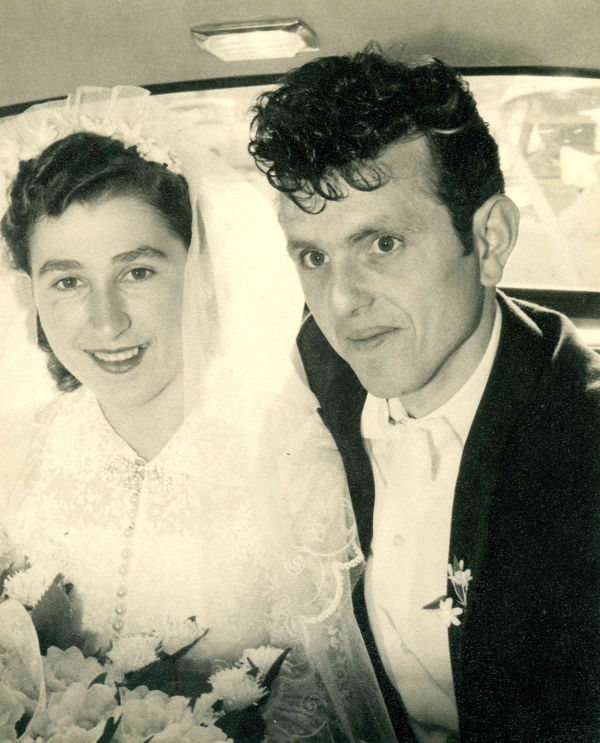
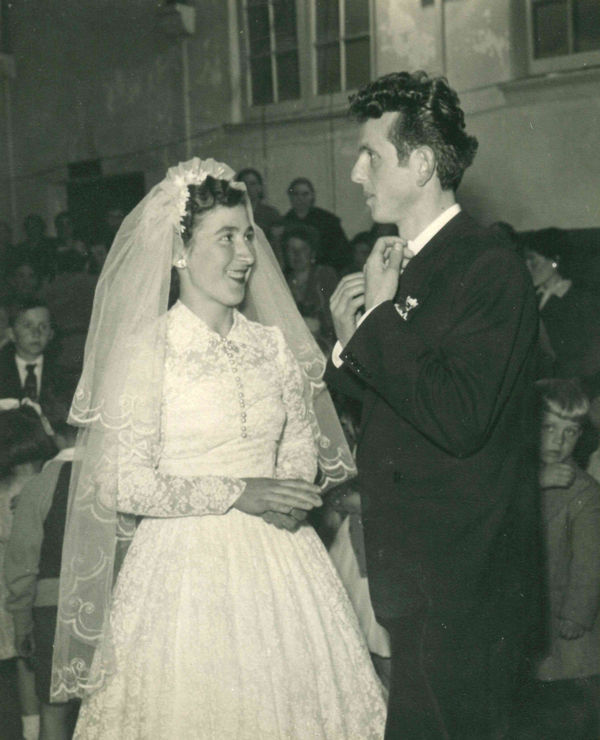
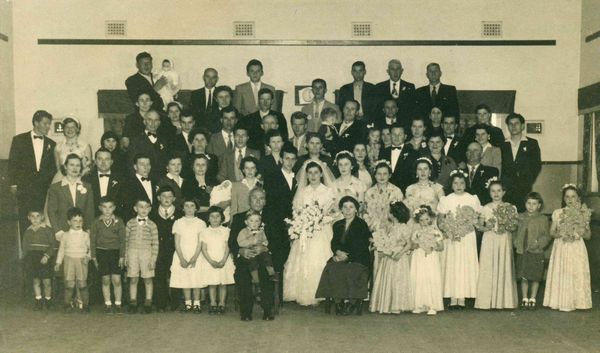
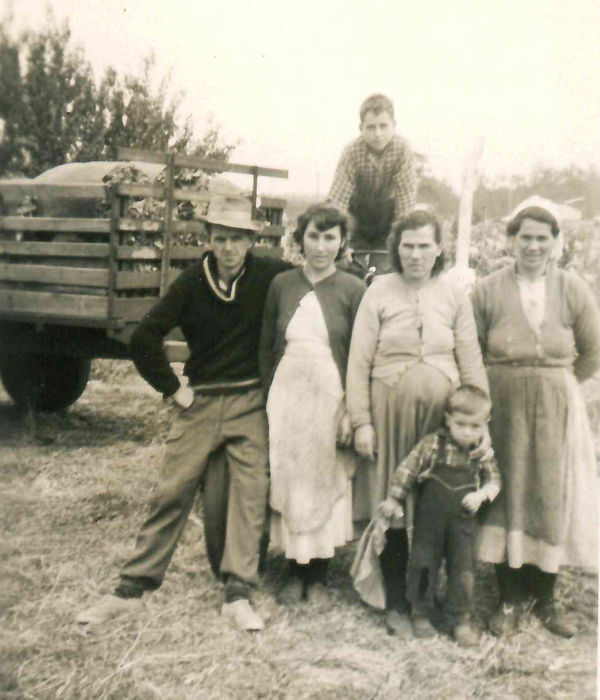 From
L-R: Me, Ristana, Petra Stoikova (Ioannou - Ristana's oldest sister),
Teta Stojanka Koleva (Nicolaou), Sotir Stoikov at the front and Giro
Stoikov at the rear during the tobacco days. Circa 1958.
From
L-R: Me, Ristana, Petra Stoikova (Ioannou - Ristana's oldest sister),
Teta Stojanka Koleva (Nicolaou), Sotir Stoikov at the front and Giro
Stoikov at the rear during the tobacco days. Circa 1958.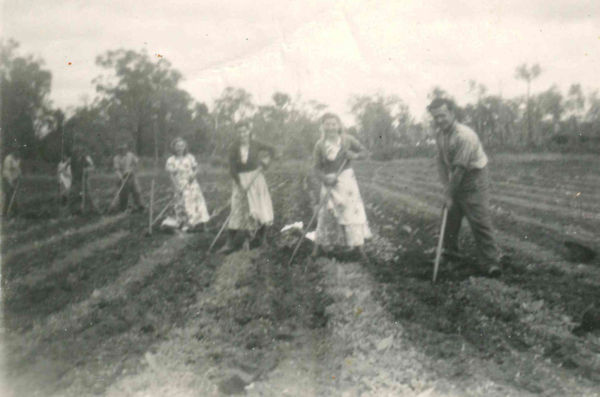

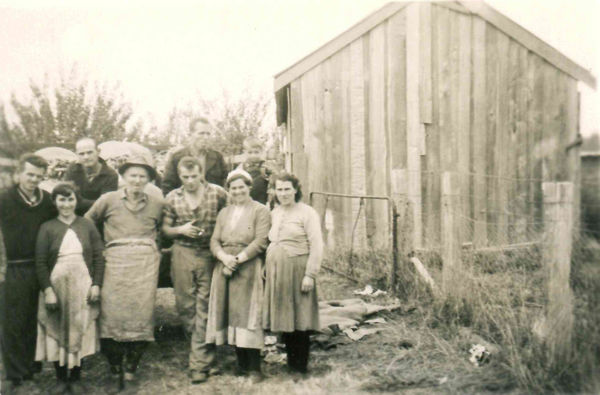 From
L-R: Me, Ristana, behind Ristana is Risto Kolev, Tetin Mitre Dimov
(Dimovitis), Lazo Kolev, behind Lazo is Vasil Stoikov (Ioannou), Stojanka
Koleva and Petra Stoikova. Circa 1959. The photo was taken between
48 and 50 Graphite Road on a strip of land that was a vehicle access
route from the main road to the paddocks behind the houses. Vasil
was tragically killed two years later in 1961 when he was knocked
off his bicycle outside our house by a drink driver.
From
L-R: Me, Ristana, behind Ristana is Risto Kolev, Tetin Mitre Dimov
(Dimovitis), Lazo Kolev, behind Lazo is Vasil Stoikov (Ioannou), Stojanka
Koleva and Petra Stoikova. Circa 1959. The photo was taken between
48 and 50 Graphite Road on a strip of land that was a vehicle access
route from the main road to the paddocks behind the houses. Vasil
was tragically killed two years later in 1961 when he was knocked
off his bicycle outside our house by a drink driver.